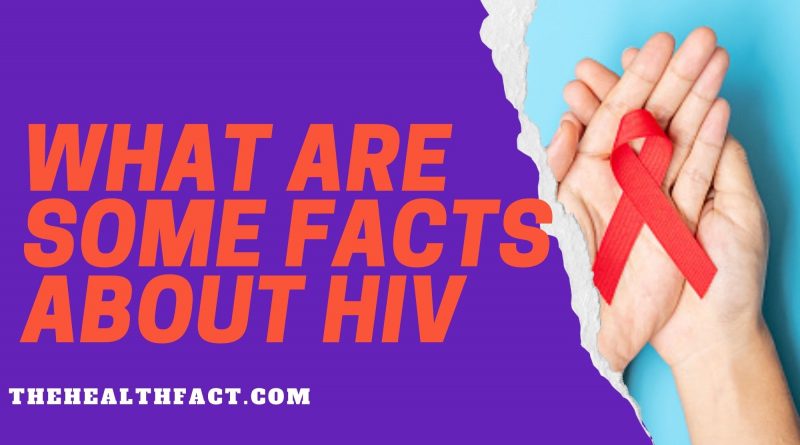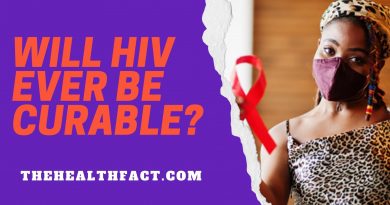What Are Some Facts About HIV: Everything That You Need to Know About HIV
HIV is the human immunodeficiency virus that causes acquired immunodeficiency syndrome which weakens a person’s immune system. العاب تكسب المال In other words, the white blood cells responsible for our immunity and prevention against different pathogens get down in counts leading to high susceptibility to diseases. This disease is very harmful, although treatment is available, still, proper knowledge is important for HIV to treat. Moreover, there are some facts which most people don’t know about. So, in this article, we will focus on facts and treatment of HIV. So, what are some facts about HIV you don’t know? Let’s discuss.
Table of Contents
what are some facts about HIV?
Where does HIV come from?
Before facts, you should know the history of this disease and from where it came. The first case of HIV infection came to light in 1981. The source of infection was the chimpanzee, which has a virus known as the SIV virus. When humans hunt chimpanzees and consume their moose meat the particular virus gets transmitted. مراهنات Though, that virus wasn’t that dangerous until it started being transmitted from human to human. The mutations and modifications in the SIV virus made them HIV, now more dangerous. Eventually, the disease AIDS began to spread from person to person.
However, HIV has two subtypes known as HIV 1 and HIV 2. Since HIV 1 virus is responsible for the infection in most cases and the name HIV refers to type 1.
Well, HIV is a worldwide threat, specifically in African countries the death ratio from HIV is more. So, is this a communicable disease? No, it’s not communicable and spreads in particular situations.
Mode of transmission
HIV can transmit through the following transmitters:-
- Blood
- Semen
- Breast milk
- saliva
The mode of transmission depends on the quantity of the virus present in an individual and the fluid through which it is transmitting. These are some parameters on which the transmission will occur.
The first mode of transmission is the sexual route:
- Male to male(bisexual)
- Male to female(heterosexual)
- Oral sex
Blood:- if the blood is transfused without proper screening or investigation, and the person whose blood is taken for the transmission is HIV positive it can directly transmit to the receiver intravenously. It can happen in hospitals’ blood banks.
Furthermore, it can spread by using the same needle or syringe too. It can happen while collecting a blood sample. If the previous person was infected, the other person injected with the same syringe can have the disease.
Uptake of drugs is also a very big transmitter of this. Drugs injected with the same needles can transmit the disease.
Mother to child:- a child can develop an infection in the uterus, during delivery, or during breastfeeding, if the mother is an HIV-positive individual.
Organ donation:- if the infected person donates an organ like kidney, skin, or even semen the chances are high of getting the infection.
As it is a harmful disease, a lot of people have misconceptions about this. In some cases, people do inappropriate behavior with the infected persons or avoid their contact. But it’s not true. You can’t get the disease by talking or sitting with them. It can only be transmitted either by sexual contact or the transmission of fluids.
Breaking myths of HIV
HIV spreads through sputum:- HIV does not spread sputum, it’s a wrong belief. If the infected person coughs or sneezes in front of you, you can’t get the disease.
HIV spreads through water:- virus doesn’t transmit through the water like swimming together.
HIV spreads through touch:- this virus doesn’t spread from touching like handshaking. You can freely touch them and sit with them.
HIV spreads through sharing food:- it’s wrong. There is no issue in sharing food, water, or makeup. And also, not from using the same washroom.
HIV spreads through insects:- insects such as mosquitoes do not spread HIV from infected to an uninfected person.
So, it’s what you need to know about HIV. The right and appropriate information are important.
What is AIDS?
AIDS is a disease developed after confronting HIV. It is the advanced stage of HIV. Though not every HIV infection will lead to AIDS.
HIV attacks CD4 cells. The CD4 count in a normal healthy adult is between 500-1,600/ cubic millimeters. A person with a CD4 count of less than 200/ cubic millimeters will be diagnosed with this syndrome.
A person can develop AIDS if he had HIV and acquire an opportunistic infection or cancer which is rare in people without HIV.
That opportunistic infection can be Pneumocystis jiroveci pneumonia which occurs in a severely immunodeficient person, such as someone with advanced HIV infection.
However, if not detected in an earlier stage, untreated HIV can lead to AIDS after years. Currently, there is no cure for this and without treatment, it is life-threatening and the person may die within years of battling with it. Treatment can be done with antiretroviral medicines.
Once AIDS develops it makes the immune system severely compromised and weakened to a point where it is no longer able to respond against most of the infections and diseases.
This condition makes the person vulnerable to a wide range of illnesses:-
- Tuberculosis
- Pneumonia
- Oral thrush
- Cryptococcal meningitis(a fungal condition in the brain)’
- Cytomegalovirus( type of herpes virus)
- Toxoplasmosis
- Cancer like lymphoma
- Cryptosporidiosis
The resulting shorter life expectancy is not directly connected to the syndrome itself but the untreated syndrome. It’s a result of diseases and infections you can get due to having a weak immune system because of AIDS.
So, we are focusing on what are some facts about HIV. And, surprisingly, you can have HIV without symptoms of AIDS for years. It’s interesting to know how HIV takes the lead in the body and shows symptoms.
What are the different stages in HIV which lead to AIDS?
First of all, a person must have contracted HIV. There are three stages to progress in HIV.
Stage 1:- Acute stage (the initial phase for few weeks after transmission)
Stage 2:- Clinical latency( chronic stage)
Stage 3:- AIDS (advanced stage)
As we already know, HIV lowers the white blood cell count or CD4 count. A healthy adult has a CD4 count between 500-1500 per cubic millimeter. A count less than 200 will be considered in the advanced stage which is AIDS itself.
The progress of HIV’s initial, chronic or advanced stages varies notably from person to person. It can stay inside for a decade before going to an advanced stage without treatment.
No exact treatment is available for HIV as of now. Though it can be managed with certain medications like antiretroviral drugs. Antiretroviral therapies can increase their CD4 count to a point where the person is no longer considered having AIDS.
Also, treatments prevent the person from different types of opportunistic infections.
How to know if someone has AIDS?
A diagnosis is crucial if someone doubts having such an infection or feeling a lower white blood test. There are a variety of tests that can be performed to get to know if the person has contracted HIV.
Antigen-antibody test
Well, the antigen-antibody test is the most common test to diagnose various threatening diseases. The result can show the result within 18-45 days after someone has contracted HIV.
The test evaluates the blood containing the antibodies for the AIDS-causing antigen that is HIV. An antigen is the specific part of the virus responsible for attacking the immune system and making antibodies, which is a type of protein that develops to respond to the infection.
Antibody test
Antibody tests solely focus on the blood for antibodies. Most people develop the HIV antibodies within 23-90 days after transmission which can be detached in the blood or saliva.
The antibody test is done using either a mouth swab or blood test. No specific preparation is needed for this procedure and the result will come within 30 minutes or even less.
Conveniently, antibody tests can be performed at home. There are two procedures for the same to be done at home:-
Oraquick HIV test:- it’s an oral swab test that provides quick results in just 20 minutes.
Home Access HIV-1 test system:- in this test the person’s finger is pricked for the blood sample and then sent to a licensed laboratory. Also, it facilitates the person to stay anonymous for the result.
In case if someone is not satisfied with the result and feels they have contracted HIV but tested negative in the test can repeat the test within 3 months. Or if tested positive, they should follow up with their healthcare provider.
Nucleic acid test
This test does not fall in general screening and not for everyone who wants to get a test done for HIV but for those who are already dealing with the early symptoms of the virus itself. so, unlike the rest of the two tests, it doesn’t look for antibodies but the virus.
HIV takes 5-21 days to get detected in the blood. Further, this test is either accompanied or confirmed by the antibody test.
Symptoms of HIV
About the first month of transmission or so, HIV contraction enters the clinical latency stage. While some people don’t have any symptoms, some may have non-specific symptoms that are not limited to a particular disease or condition.
Some non-specific symptoms of HIV:-
- Headaches
- Body aches
- Night sweats
- Fatigue
- Nausea and vomiting
- Weight loss
- Diarrhea
- Repeated fevers
- Skin rashes
- Frequent oral or vaginal yeast infection
- Swollen lymph nodes
Although these are the primary or early symptoms still transmittable to others even when the contraction doesn’t have specific symptoms. Even if the person has contracted HIV he might not get to know it for a prolonged time. If someone thinks they have contracted HIV it’s important to have a test done.
Symptoms of HIV may come and go at this stage or can progress frequently. However, this progression can be suppressed subsequently with treatment.
If the antiretroviral therapy starts during the initial phase of HIV contraction the AIDS stage can be prevented from developing.
Treatment options for HIV
As we know the treatment should begin as early as possible after detection of HIV. The key treatment is antiretroviral therapy which is a combination of daily medications that resist the further growth of the virus. Thus, helps in protecting CD4 cells and keeping the immune system from damage, and keeps active enough to deal with normal diseases and infections.
A lot of antiretroviral medications are approved for HIV treatment. It helps in reducing the risk of developing any further complications such as progression and transmission of the virus to others.
Medicines for HIV are categorized as follows:-
- Nucleoside reverse transcriptase inhibitors
- Protease inhibitors
- Non-nucleoside reverse transcriptase inhibitors
- Fusion inhibitors
- Integrase strand transfer inhibitors
- CCR5 antagonist or entry inhibitors
So, when the medications are given in combination with at least two drugs of this class the HIV will not be detectable in the test. Though HIV still is inside a person’s body but the quantity declines to an extent when it’s not visible in the test.
This should be noted that the virus can take the lead again if the person stops taking medications after an improvement. That means again your immunity will be in crisis.
If the medication prescription and consumption are done in timely antiretroviral therapy can be the most effective treatment for HIV. How to know if your medicines are working in the body.? So for this purpose blood testing is done to know if the regimen is working properly inside the body and strong enough to keep the viral quantity down and CD4 count up. If the regimen isn’t working your healthcare provider will prescribe you another regimen more effective than this.
Prevention of HIV virus
Prevention is better than cure and in the case of HIV, it’s worth saying this. Currently, there is no vaccine available for HIV and researches are continuing over this. Hence, taking some preventive measures will keep you away from this dangerous syndrome.
The prevention of HIV virus can be done by following:
Safe sex:- Avoid sex with multiple partners and always use a condom as a preventive method. It can be transmitted through vaginal or anal sex.
Avoid sharing needles:- pay attention to your injecting sessions whether the doctor or concerned staff a new needle or not in front of you. Don’t you ever inject someone else’s used syringe? HIV can be transmitted by contaminated objects such as injections or scissors.
Get tested for HIV:- If your or your partner is concerned about HIV, get tested for HIV. There is nothing wrong with it, it’s a safe and healthy way to go forward in your relationship.
Get tested for other STDs as well:- having other sexually transmitted diseases can also increase the chances of HIV contraction.
Conclusion
HIV is a dangerous virus that can be transmitted sexually or through body fluids such as blood transfusion or injecting the contaminated needle into another person. AIDS is the final consequence of this virus if don’t diagnose earlier. Also, the clinical latency period of HIV could remain 10-15 years after the contraction. The one big thing to prevent HIV is safe sex, such as using a condom and avoiding sex with multiple partners. Treatment of HIV includes antiretroviral therapy in combinations of certain drugs.
Frequently Asked Questions:-
What are the basic fact of HIV?
The basic fact of HIV is it is a retrovirus that infects the cells of the immune system and weakens it, gradually reducing the amount of CD4 cells. Makes you susceptible to various other diseases like pneumonia, fungal infections, and many others. AIDS or immunodeficiency syndrome is its final stage of progression.
What is the main reason for HIV?
The main reason for HIV is through blood fluids like blood, semen, or vaginal fluid. Unprotected sex with the infected person might bring this virus to your body. Or a blood fusion from an infected person can cause the contraction. Using the same needles is also a big reason for causing HIV.
How long can you live with HIV without knowing?
You can live with HIV for 10-15 without knowing. This is because of the unnoticeable chronic symptoms of HIV for a long time, this phase is known as clinical latency. It is also said by HIV.gov that the latency period could stay for 10-15 years, which makes it more difficult to diagnose.
What is the best medication for HIV?
The best medicine for HIV is highly active antiretroviral therapy. This is the fact that early HIV treatments lead to few complications. Hence, according to the experts, it is highly recommended that HAART should be done for every HIV person with a combination of at least three drugs that are standard for HIV treatment.
What antibiotics treat HIV?
Trimethoprim-sulfamethoxazole is the most effective antibiotic for HIV- infected children. Because it is used in the early stage and for prophylaxis of pneumocystis carinii pneumonia, which occurs in almost 42%b of people.
What will happen if I skip my ARV for 2 days?
Skipping doses of HIV drugs can reduce the effectiveness and develop drug resistance making the drug dose less effective. So, make sure you take all the doses on time otherwise it can be a big milestone in your treatment.
What is the normal CD4 count for a healthy person?
CD4 count in a normal healthy individual is in the range between 500-1200/ cubic millimeter in adults and teens. Which can reduce gradually if not treated with time.
What are the symptoms of low CD4 count?
Some common symptoms of low CD4 count are fever, cough, weight loss, fatigue, nausea and vomiting, difficulty in breathing, and night sweats.
Do people with HIV know when they have it?
It’s possible that you have HIV and you don’t have any specific symptoms of it. And not every exposure to HIV needs to lead to contraction. Most people with HIV stay unaware of the contraction for years. The only option to know is to get tested for HIV when you feel you have been exposed to such a situation.
How quickly do HIV symptoms appear?
HIV symptoms can appear within a few weeks to months after the transmission of the virus. Early symptoms resemble a bad flu case. While in another case the primary symptom includes fever.




